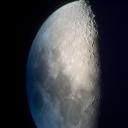Yahoo Answers is shutting down on May 4th, 2021 (Eastern Time) and beginning April 20th, 2021 (Eastern Time) the Yahoo Answers website will be in read-only mode. There will be no changes to other Yahoo properties or services, or your Yahoo account. You can find more information about the Yahoo Answers shutdown and how to download your data on this help page.
Trending News
Comet L4 PANSTARRS(Panstarrs)for short?
I have been told that Early next year, this comet will come fairly close to Earth and the Sun.I was wondering if it can be seen now with a 10" scope and if so what part of the sky do I look?Any guides or maps would be very helpful.Also if you have any more info on this Comet Id love to hear.
Thanks,Wally
4 Answers
- I don't think soLv 59 years agoFavorite Answer
Comet C/2011 L4 Panstarrs right now is in the constellation Hydra and is only visible in the very early evening skies in the southwest at about magnitude 13.5. It is getting closer to the sun and farther into the daytime sky every day. It transits at 5pm, and sets at 9:30pm. These times are for 40 deg latitude, and will vary depending on where you live. Because it sets so early, it may not be dark enough where you live to see it.
On Sept 8, it is located at RA 15h 01m 38s Dec -25d 42' 22" (J2000).
I've put a link to the location in google sky in the references below. The comet isn't shown in google sky, but you can move the mouse around until you find the coordinates I listed. You can zoom in/out to see the stars around it to help with star hopping your way to it. It is very faint at mag 13.5, and is getting brighter.
The comet is about 3.5 times farther from the Sun right now than we are, and is about the same distance from Earth. It will reach its closest point to the Sun on March 10th.
You might want to get a good sky chart/planetarium program such as The Sky X, Starry Night Pro, or Stellarium. This will help you in finding objects and making your own star charts. I used The Sky X to find this object.
Source(s): Two decades as an amateur astronomer. The Sky X http://www.google.com/sky/#latitude=-25.7099089197... - swedenburgLv 44 years ago
particular and no. The "at as quickly as" area won't be able to happen. the only difficulty that would reason the variety of adventure you're talking approximately is a sizable mass in our region. we would understand approximately any probably occurences eons beforehand. brucebirchall's answer is a superb one different than for the area approximately Jupiter. particular, comet Shoemaker-Levy plunged into Jupiter. No, all comets at the instant are not sucked into Jupiter. The orbits merely got here approximately to intersect. Likewise, if comets grew to develop into very difficulty-loose through fact of a huge mass nerve-racking the Oort cloud, very few of them might somewhat hit the Earth (of direction, it does not take that many). Jupiter might get hit extra advantageous than us, regardless of the undeniable fact that, merely through fact it rather is a extra robust objective.
- Erica sLv 79 years ago
It should appear in the evening sky in about 12 months time. Much of a comet's brightness depends on the volume of gas and ice it contains, so we cannot yet be sure it will be a spectacular sight. However, it is unlikely to be as bright as the planet Venus.
- 9 years ago
you should be able to see it with the naked eye from freb 2013 realisticly your 10" scope should be able to pick it up clearly now



